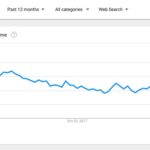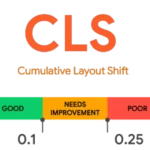5 Critical Reasons Why Largest Contentful Paint (LCP) Can Make or Break Your Website
Largest Contentful Paint (LCP): In today’s digital world, speed is king. Whether you’re running a blog, an e-commerce site, or a government portal, your site’s loading speed can define your success. And at the heart of that speed lies one of the most crucial performance metrics ever introduced: Largest Contentful Paint, or LCP.
- 🧠 What is Largest Contentful Paint (LCP)?
- 🕰️ Timeline: The Rise of LCP in Web Performance
- 📊 Why LCP Matters: Facts That Say It All
- 🌟 The Ideal LCP Benchmark
- 💬 Frequently Asked Questions (FAQs)
- Q1. What counts as the “largest” content?
- Q2. How do I measure LCP?
- Q3. Does LCP affect SEO?
- Q4. What causes poor LCP?
- Q5. Can LCP be improved?
- 📌 5 Critical Reasons LCP Can Make or Break Your Website
- 1. 🧭 It Reflects Real-User Experience
- 2. 🔍 It Impacts Google Rankings
- 3. 🛒 It Influences Buying Decisions
- 4. 📱 It’s Critical on Mobile Devices
- 5. 💡 It’s Easy to Fix (Once You Know How)
- 💖 Why We Should Wish for Better LCP Awareness
- 🏆 LCP’s Societal Significance
- 🧩 Important Points to Remember
- 🌞 Daily Life Impact of LCP
- 🌱 Final Thoughts: LCP is the New First Impression
- 📝 Conclusion
If you’ve ever wondered why your website ranks lower than expected or why users bounce off even your best-looking pages — chances are, your LCP is telling the story you’ve missed.
In this article, we will dive deep into what LCP is, its history, timeline, importance, facts, FAQs, and how it impacts our daily digital life — all written in a warm, engaging tone that makes tech understandable for everyone.
🧠 What is Largest Contentful Paint (LCP)?
Largest Contentful Paint (LCP) is a Core Web Vital metric developed by Google that measures how quickly the largest visible content element (like a big image or a headline) on a web page loads and becomes visible to users.
Simply put:
LCP tells us how fast the most important content appears on screen. It’s not about the entire page loading — just the part the user really needs first.
🕰️ Timeline: The Rise of LCP in Web Performance
| Year | Event |
|---|---|
| 2018 | Google begins development of Core Web Vitals |
| May 2020 | LCP officially launched as a part of Google’s Core Web Vitals |
| June 2021 | Google starts using Core Web Vitals in Search Ranking |
| 2023 | Updated thresholds and tools (PageSpeed Insights, Lighthouse) highlight LCP importance |
| 2024 | LCP becomes central to mobile-first performance strategy across industries |
📊 Why LCP Matters: Facts That Say It All
📈 A 1-second delay in LCP can reduce conversions by up to 20%
⏱️ Google considers 2.5 seconds or faster as a “Good” LCP
🖥️ Most slow LCP issues come from unoptimized images or slow server response
🔍 Websites with better LCP have better SEO visibility
💰 70% of users say speed influences their purchase decisions
🌟 The Ideal LCP Benchmark
| Rating | LCP Time |
|---|---|
| ✅ Good | ≤ 2.5 seconds |
| ⚠️ Needs Improvement | 2.5–4.0 seconds |
| ❌ Poor | > 4.0 seconds |
💬 Frequently Asked Questions (FAQs)
Q1. What counts as the “largest” content?
Usually a big image, video, or text block (like a headline).
Q2. How do I measure LCP?
Use tools like:
Google PageSpeed Insights
Lighthouse
Chrome DevTools
WebPageTest.org
Q3. Does LCP affect SEO?
✅ YES. Google has confirmed that Core Web Vitals — including LCP — affect rankings.
Q4. What causes poor LCP?
Common causes:
Slow server response
Large images not optimized
JavaScript blocking rendering
Web fonts loading too late
Q5. Can LCP be improved?
Absolutely. Optimizing images, reducing CSS/JS blocking, using CDN, and setting font-display: swap are just some methods.
📌 5 Critical Reasons LCP Can Make or Break Your Website
1. 🧭 It Reflects Real-User Experience
LCP is not a technical vanity metric. It shows what real users feel when they land on your site. A slow LCP means users see a blank page or spinner too long — and they leave.
2. 🔍 It Impacts Google Rankings
In 2021, Google began using LCP (with FID & CLS) in its ranking algorithm. A poor LCP may drag your SEO down, regardless of your content quality.
3. 🛒 It Influences Buying Decisions
For e-commerce, a slow LCP = lost revenue. Imagine a user lands on a product page and the image takes 5 seconds to load. They bounce. You lose a sale.
4. 📱 It’s Critical on Mobile Devices
Mobile users expect faster loads. Google says mobile-first indexing makes LCP even more crucial on smartphones, especially in India where data speed varies.
5. 💡 It’s Easy to Fix (Once You Know How)
Unlike complex backend issues, LCP has clear, fixable causes. With tools like PageSpeed Insights, any developer (or even a non-techie with a guide) can make improvements.
💖 Why We Should Wish for Better LCP Awareness
We wish every small business owner, NGO, and creator knew that speed = trust.
A faster LCP means more users engaged
It gives an inclusive experience to users on slow connections
It creates credibility without needing a fancy design
Let’s wish that in schools, digital literacy classes include topics like LCP — because even students creating blogs or portfolios deserve visibility.
🏆 LCP’s Societal Significance
| Area | Why LCP Matters |
|---|---|
| 🏫 Education | Faster LCP means better access for students in rural areas |
| 🏥 Health | Health portals need fast, clear LCP to deliver critical info |
| 🏛️ Government | Sarkari result, scholarship, and voter info sites must load quickly |
| 📰 Media | News platforms with quick LCP build reader trust |
| 🛍️ E-commerce | Boosts buying confidence and customer satisfaction |
In short, LCP = Accessibility. Not just for the rich with fiber optics — but for the masses on 3G.
🧩 Important Points to Remember
LCP is about the largest visible element, not the whole page
Good LCP is under 2.5 seconds
Fixing image sizes, server speed, and render-blocking scripts is key
Use free tools to diagnose LCP problems
LCP influences SEO, UX, and revenue
🌞 Daily Life Impact of LCP
Think about it — you click a link to:
Check your bank balance
Read breaking news
View a job result
Buy a gift
If the page doesn’t load quickly, you get annoyed. That’s LCP in real-time. Every millisecond matters in a world that’s always scrolling.
🌱 Final Thoughts: LCP is the New First Impression
Your website’s Largest Contentful Paint is like a digital handshake. It’s the first visual connection between you and your audience. And just like in life — first impressions matter.
Whether you’re a blogger, a small store owner, or a web designer — understanding and improving LCP is one of the easiest and most impactful things you can do today.
📝 Conclusion
Largest Contentful Paint (LCP) isn’t just a Google metric. It’s a reflection of human patience, attention span, and expectation.
It has a clear history and evolving benchmarks.
It affects SEO, user trust, and conversions.
It can be measured and improved by everyone — techie or not.
So next time you launch a website or blog post, remember:
“If your content is worth reading, it’s worth loading quickly.”
Here’s to a faster, friendlier web for all. 🌍








